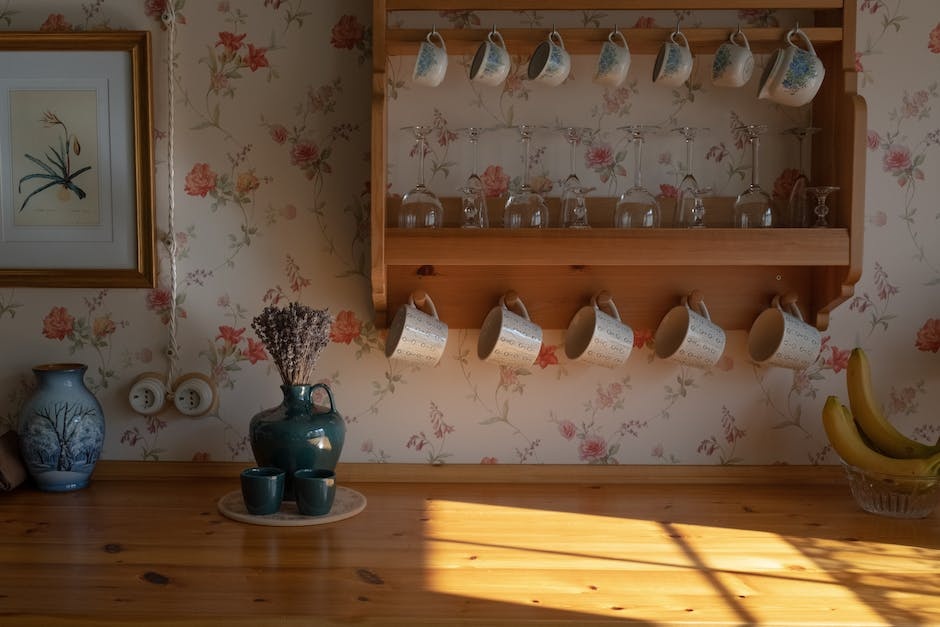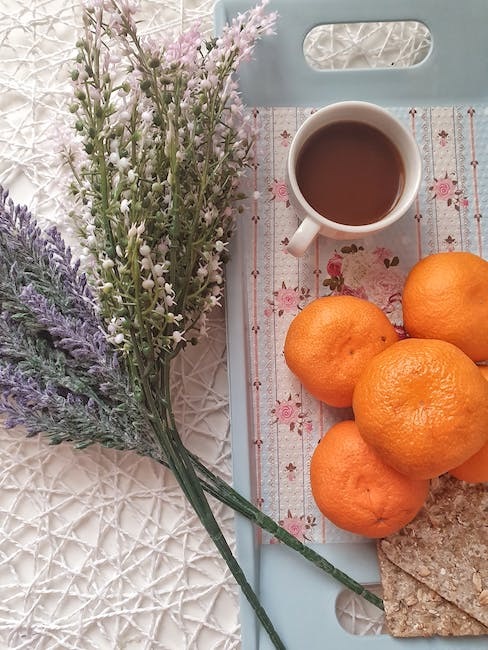The fascinating origins of Earl Grey tea
Are you a fan of Earl Grey tea? This classic black tea with its distinctive citrusy aroma and flavor has been a favorite of tea lovers for centuries. But do you know the story behind this beloved brew? Let’s take a journey through time and explore the fascinating origins of Earl Grey tea.
Who was Earl Grey?
First of all, let’s clear up the mystery behind the name. Earl Grey tea is named after Charles Grey, the 2nd Earl Grey, who served as British Prime Minister from 1830 to 1834. He is best known for his political reforms, including the abolition of slavery and the reform of the electoral system. But how did this esteemed politician become associated with a tea blend?
The birth of Earl Grey tea
The exact origin of Earl Grey tea is not clear, but it is believed to have been created in the early 19th century by a Chinese tea maker who added bergamot oil to black tea to mask its strong flavor and odor. Bergamot oil is extracted from the rind of bergamot oranges, which are a type of citrus fruit that is grown in Italy and other Mediterranean countries.
The story goes that the Earl Grey was given the recipe for this unique tea blend by a Chinese envoy, as a gift for saving the life of his son. The Earl was so taken with the blend that he asked his tea merchant to recreate it for him and his friends back in England. Thus, Earl Grey tea was born.
The recipe for Earl Grey tea
Earl Grey tea is typically made with a blend of black teas, such as Ceylon, Assam, or Keemun, that are flavored with natural or artificial bergamot oil. The amount and quality of bergamot oil used in Earl Grey tea can vary depending on the brand and recipe, but it should be enough to impart a distinctive citrusy aroma and flavor without overpowering the tea itself.
Some tea purists argue that only natural bergamot oil should be used in Earl Grey tea, while others are happy with artificial flavorings. Ultimately, the choice is yours. Whatever your preference, be sure to brew your Earl Grey tea properly, using freshly boiled water and steeping for 3-5 minutes.
The popularity of Earl Grey tea
Since its creation, Earl Grey tea has become one of the most popular tea blends in the world. It has inspired countless variations, from Earl Grey green tea to Earl Grey with lavender or vanilla. It has also been featured in popular culture, from literature (think of the iconic scene in Jane Austen’s “Pride and Prejudice” where Mr. Darcy and Elizabeth Bennet share a pot of tea) to film and television.
In conclusion
So next time you sip a cup of Earl Grey tea, remember the fascinating story behind this classic brew. Whether you prefer it hot or iced, with milk or without, Earl Grey tea is a timeless favorite that has stood the test of time. Raise a cup to the 2nd Earl Grey and the Chinese tea maker who first blended this delicious tea, and enjoy the citrusy goodness of a true classic.
Why Lavender is More Than Just a Fragrant Herb
When you think of lavender, you probably imagine its sweet and soothing scent. However, there is so much more to this fragrant herb than just its aroma. Lavender has been used for centuries for its various health benefits. In this blog post, we will explore the many ways in which lavender can benefit your health and wellbeing.
The Scent of Lavender
The sweet, floral, and slightly herbal scent of lavender is calming and soothing to the senses. It is commonly used in aromatherapy, where inhaling the scent can help reduce anxiety and promote relaxation. The scent of lavender has also been known to improve sleep quality and alleviate headaches and migraines.
The Health Benefits of Lavender
Lavender has several health benefits, including its ability to reduce anxiety, promote relaxation, improve sleep quality, and alleviate headaches and migraines. But that’s not all! Lavender is also known to have anti-inflammatory properties, which can help reduce inflammation in the body. This makes it a great addition to your diet and personal care routine.
Lavender Tea
If you’re not a fan of the scent of lavender, you can still enjoy its health benefits by drinking lavender tea. Lavender tea is a popular way of consuming the herb and is said to have similar health benefits as aromatherapy and topical use. Adding lavender to earl grey tea can enhance its flavor and provide additional health benefits.
Incorporating Lavender into Your Routine
There are many ways to incorporate lavender into your daily routine. You can use lavender essential oil in a diffuser or apply it topically to your skin. You can also add dried lavender to your bath or make your own lavender-infused body oil. Drinking lavender tea is another easy way to consume this herb.

Conclusion
As you can see, lavender is more than just a fragrant herb. It has many health benefits and can be easily incorporated into your daily routine. So, the next time you’re feeling stressed or anxious, try incorporating some lavender into your life and see how it can benefit you.
The Powerful Health Benefits of Earl Grey and Lavender Tea
Tea lovers, rejoice! If you’re looking for a delicious and healthy way to boost your wellness game, try combining earl grey and lavender tea. These two teas have a range of health benefits on their own, but when combined, they create a powerful elixir that can help improve your heart health, boost your immune system, reduce stress and anxiety, and more.
What is Earl Grey Tea?
Earl grey tea is a black tea that is flavored with bergamot oil, which gives it its distinctive citrusy flavor and aroma. But the benefits of earl grey tea go beyond its delicious taste. Earl grey tea contains polyphenols, which are antioxidants that have been shown to reduce the risk of heart disease, cancer, and diabetes. Additionally, the bergamot oil used to flavor earl grey tea has antiviral and antibacterial properties, which can help boost the immune system and fight off infections.
What is Lavender Tea?
Lavender tea is made from the dried flowers of the lavender plant. It is well-known for its calming and relaxing properties, which can help reduce anxiety, stress, and insomnia. But lavender tea also contains antioxidants that can help protect the body against oxidative stress and inflammation, which can contribute to a range of health problems.
The Health Benefits of Earl Grey and Lavender Tea
When combined, earl grey and lavender tea create a powerful combination of health benefits:
| Benefit | Explanation |
|---|---|
| Improved heart health | The polyphenols in earl grey tea can help reduce the risk of heart disease, while the antioxidants in lavender tea can help protect the heart against oxidative stress. |
| Stronger immune function | The antiviral and antibacterial properties of bergamot oil can help boost the immune system, while the antioxidants in lavender tea can help protect the body against infections. |
| Reduced stress and anxiety | The calming and relaxing properties of lavender tea can help reduce stress and anxiety. |
| Better overall wellness | By improving heart health, boosting immune function, and reducing stress and anxiety, earl grey and lavender tea can help promote better overall wellness. |
How to Make Earl Grey and Lavender Tea
Making earl grey and lavender tea is simple:
- Bring water to a boil.
- Add a tea bag of earl grey tea and a tea bag of lavender tea to a teapot or mug.
- Pour the hot water over the tea bags.
- Let steep for 3-5 minutes.
- Remove the tea bags and enjoy!
Alternatively, you can use loose leaf tea and a tea strainer. Just be sure to use fresh, high-quality tea for the best flavor and health benefits.
The Bottom Line
Earl grey and lavender tea are both delicious and healthy on their own, but when combined, they create a powerful elixir that can help improve your heart health, boost your immune system, reduce stress and anxiety, and promote better overall wellness. So next time you’re looking for a healthy beverage option, reach for earl grey and lavender tea.
Brewing the Perfect Cup of Tea: Tips for a Delicious and Aromatic Experience
There’s nothing quite like a warm, comforting cup of tea to soothe the soul and awaken the senses. But did you know that brewing a perfect cup of tea requires a bit of finesse and attention to detail? Here are some tips to help you elevate your tea game and enjoy a truly delicious and aromatic experience.
Start with High-Quality Loose Leaf Tea and Filtered Water
The key to a great cup of tea is using fresh, high-quality loose leaf tea. Loose leaf tea offers a fuller flavor and aroma than tea bags, which can be stale or contain lower-quality tea leaves. Additionally, filtered water ensures that your tea is free from any unwanted flavors or impurities.
Measure Your Tea and Heat the Water Appropriately
For a standard cup of tea, use 1-2 teaspoons of loose leaf tea per cup of water, depending on your personal preference. It’s important to heat the water to just below boiling point, around 190-200F, to avoid scorching the tea leaves. This temperature also allows for optimal flavor extraction.
Steep Your Tea for the Right Amount of Time
The length of time you steep your tea depends on the type of tea and your desired strength. Generally, steeping for 3-4 minutes is recommended, but over-steeping can result in bitterness. Be sure to experiment with different brewing times to find your perfect cup.
Consider Adding Milk, Honey, or Lavender for Flavor
If you enjoy your tea with a little extra flavor, consider adding a splash of milk or honey to taste. For a more pronounced lavender flavor, add a sprig of fresh lavender to the tea leaves before steeping. To enhance the aroma and flavor, try serving your tea with a slice of lemon or a small sprig of fresh lavender as a garnish.
Use a Tea Strainer or Infuser to Prevent Loose Leaves
To avoid loose leaves floating in your tea, use a tea strainer or infuser. This will ensure that your tea is smooth and enjoyable to drink.
Experiment and Enjoy!
Remember, brewing the perfect cup of tea is all about experimentation and finding what works for you. Don’t be afraid to try new brewing times, ratios, and flavors. With a little practice, you’ll be able to enjoy a delicious and aromatic cup of tea every time.
| Tip | Description |
|---|---|
| Start with High-Quality Loose Leaf Tea and Filtered Water | Using fresh, high-quality loose leaf tea and filtered water ensures the best flavor and aroma. |
| Measure Your Tea and Heat the Water Appropriately | Use 1-2 teaspoons of tea per cup of water and heat to just below boiling point, around 190-200F, to avoid scorching the tea leaves. |
| Steep Your Tea for the Right Amount of Time | Generally, steeping for 3-4 minutes is recommended, but be sure to experiment with different brewing times to find your perfect cup. |
| Consider Adding Milk, Honey, or Lavender for Flavor | Adding a splash of milk or honey to taste, or a sprig of fresh lavender, can enhance the flavor of your tea. |
| Use a Tea Strainer or Infuser to Prevent Loose Leaves | To ensure your tea is smooth and enjoyable to drink, use a tea strainer or infuser. |
Now that you know the key elements to brewing the perfect cup of tea, it’s time to put your knowledge into practice. Whether you prefer black, green, or herbal tea, these <


Leave a Reply